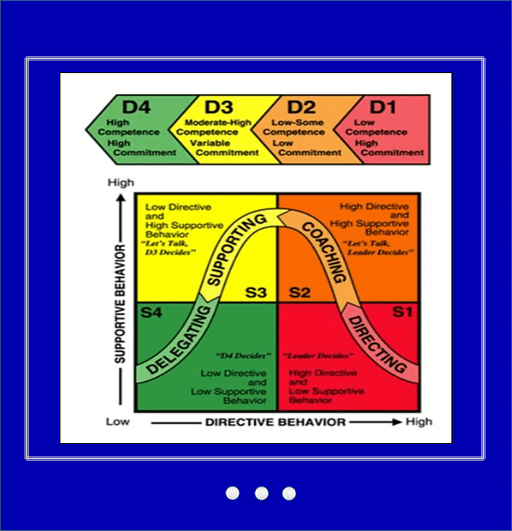LEADERSHIP
Unpacking Situational Leadership: Why a one-size-fits-all approach never works
Whilst there is no cookie-cutter solution to leadership, what I enjoy most about Situational Leadership is that it is one of the few leadership models that guides how we lead. This model was developed by Paul Hersey and Ken Blanchard (of 'One Minute Manager' fame) back in the late 1960's. That's pretty old for any model; yet today, Situational Leadership remains as relevant as ever.
What has allowed it to stand the test of time is that it identified four leadership approaches that consider the skill set and the context of the follower. Using a two-by-two matrix, these inputs indicate the best leadership style to use when engaging with the follower.
Additionally, Situational Leadership is often viewed as largely transformational, because of its strong focus on supporting and building competence with followers. The emphasis on the growth and development of followers underscores the requirements of leaders to grow their pipeline with long-term organisational success in mind.
This is what the Situational Leadership model looks like:
The Situational Leadeship Model

Image Source: Adapted from https://www.researchgate.net/figure/Situational-Leadership-Model_fig1_327406140/download?_tp=eyJjb250ZXh0Ijp7ImZpcnN0UGFnZSI6Il9kaXJlY3QiLCJwYWdlIjoiX2RpcmVjdCJ9fQ
The Telling or Directing quadrant
As you'll see from the Situational Leadership Model, the first quadrant (S1) is highly directive and low on the supportive or relational axis. This links to a fairly transactional leadership style, because your follower doesn't yet have the requisite skills that require a different approach.
Imagine that you have a new person join your team. Onboarding this person successfully will require you to share direct knowledge about the workings of your business or business unit. You'll need to familiarise the individual with the working environment and upskill them to build the capacity to perform within your workplace's requirements. Even if the individual demonstrates high competence, they will still need this contextual help.
So in this first quadrant, you need to do a fair amount of telling, providing clear instructions and direction, and providing feedback to the individual to enable enhanced competency. And that moves us on to the next quadrant, S2.
The Selling or Coaching quadrant
This quadrant is appropriate when your follower is starting to find their feet, but there are still some areas where they need your direct input and guidance. You'll recognise that this is where transactional leadership gives way to a more transformational approach.
Not to be confused with the stand-alone coaching leadership style, this leadership approach still holds an aspect of medium to high directive behaviour, but this is now matched with a high supporting and relational aspect. The fact that your follower is developing strong competencies allows you to begin or enhance their input into processes and approaches, encouraging relational exchanges that build rapport.
This then facilitates a shift from S2 to S3.
The Participating or Supporting quadrant
As you will see in the Situational Leadership framework, S3 is where the engagement shifts to be more relational, and less task-focused. This is because the follower has gained the requisite skills and directive leadership is thus rarely required. As a leader, this is the time when you bring your follower into more strategically-oriented decision-making processes because they now have the foundation and experience upon which to exercise sound judgement.
What is common here is that the individual has achieved a level of role proficiency, but they may lack motivation or confidence in their abilities. Leveraging a highly supportive and relational approach, confidence can be built and motivation heightened through a supportive and relational focus.
The Empowering and Delegating quadrant
This final quadrand is where a follower has gained strong workplace experience and is capable of working with much, if any, directive guidance. At this stage, followers can be empowered to a new level, based on their experience and competency. From a leadership perspective, this is a great time to delegate more work or perhaps share a higher level of work with your follower.
Situational Leadership is not linear
The Situational Leadership model may imply that the leadership approach is linear, moving smoothly from one quadrant to the next. This is rarely the case, given the complex work environment we operate within and the complex work we undertake.
It is more often the case that leaders allocate more work, and more complex work, to their followers, once competency has been reached on current tasks. This means that whilst the follower may have achieved capability and even confidence in some areas, there may be others that require a more directive approach.
The trick with Situational Leadership is to evaluate the ability and willingness of followers to successfully complete tasks. The task may be to demonstrate competence in answering a customer's query, but equally, it may be to identify or perform due diligence to acquire a portfolio company. A leader's ability to assess their follower's competence is an essential ability necessary to determin the appropriate Situational Leadership approach.
As always, this indicates that the context is crucial, but equally, where we find our follower is significant. If they are highly experienced and capable, responsibility can be delegated and the individual emplowered with greater authority. However, as we are upskilling individuals across the vast span of business and commerce, an aspect of directive or coaching leadership may still be required.
In closing, the Situational Leadership framework is valuable as it can help steer us as leaders towards the best approach in leading our followers based on their competency and motivational levels. However, given that human development is not a straight line, leadership conversations may move between quadrants, depending on the specifics of the follower in question. This simply proves that leadership is always . . . situational.
